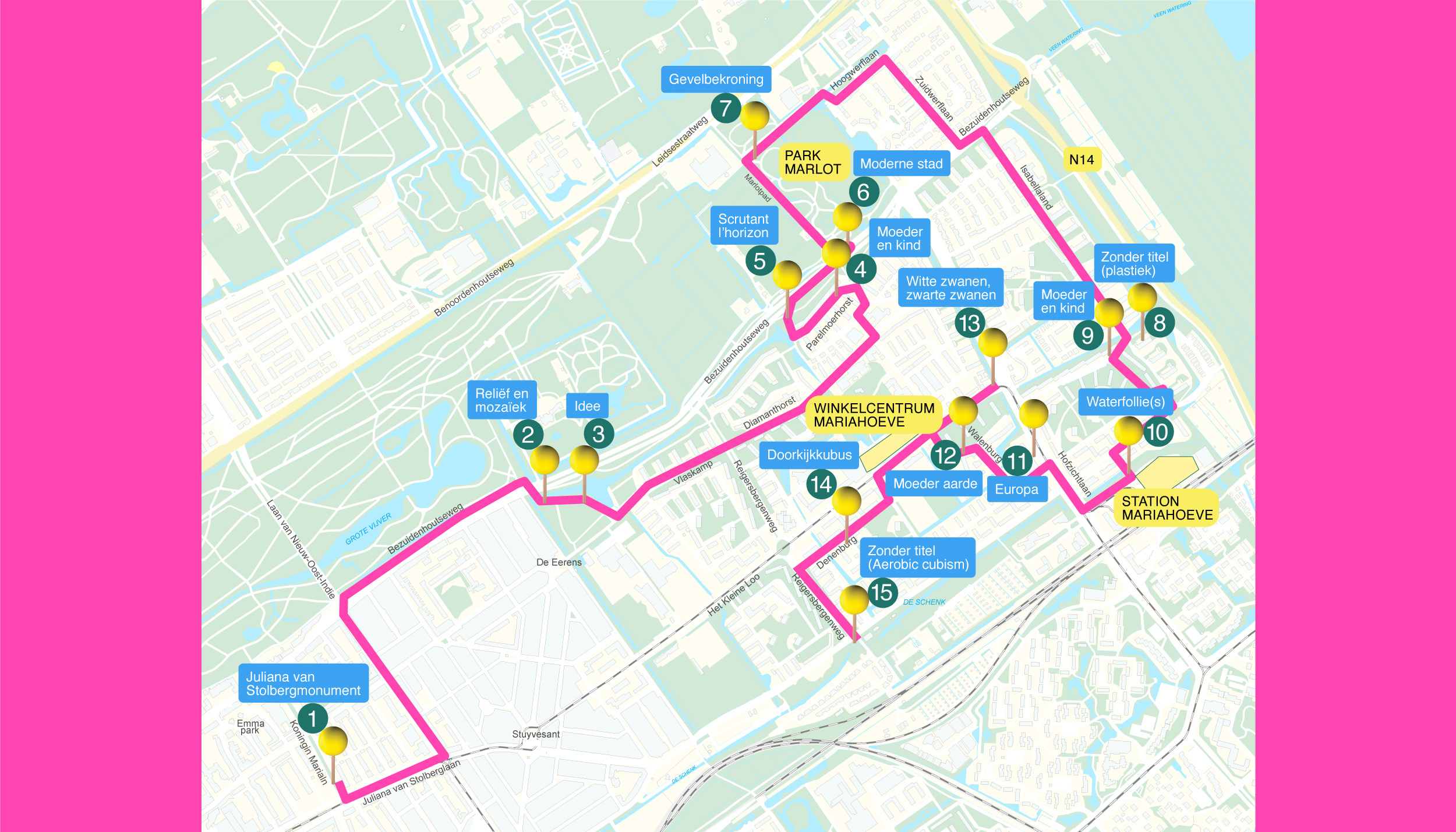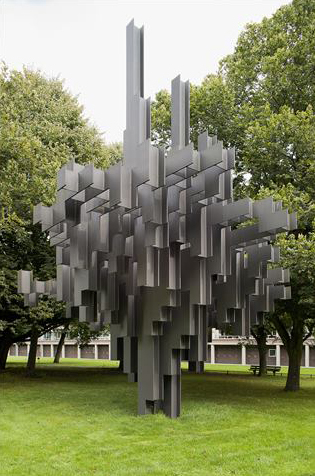65 years of Mariahoeve: playful reconstruction
Start: Monument Juliana van Stolberg, Koningin Marialaan/corner Juliana van Stolberglaan
End: Untitled (Aerobic cubism), corner of Reigensbergerweg/Finnenburg/Boekweitkamp
Bike route: over 1.5 hours
Introduction
The Mariahoeve farm once stood at 575 Bezuidenhoutseweg. The new housing estate designed in 1953 by engineer Frits van der Sluijs was named after it. Between 1955 and 1965/70 as many as 7,000 new homes for some 25,000 residents appeared where the polder used to be. Necessary to solve the housing shortage after World War II. Mariahoeve was to become a stylish neighborhood with diverse housing types for different income groups.
Van der Sluijs looked to progressive Scandinavia for his design. They experimented a great deal with parcellation, the shape of the pieces of land on which to build. In his Mariahoeve not the same blocks of flats in the same rigid patterns as in The Hague Southwest, but a variety of housing types (high and low flats, single-family homes and villas), each time combined and designed differently. Important reason for the Rijksdienst Cultureel Erfgoed to select Mariahoeve in 2011 as one of the most important reconstruction districts of our country. Special and at the same time self-evident are the more than 30 works of art in this neighborhood. They appeared here thanks to the new percentage regulation. The government set aside 1-1.5% of the construction sum of new buildings for art commissions.
In 2023, it will be 65 years since Mariahoeve saw the light of day. The hand of Van der Sluijs is still visible. The new buildings also conform to his unique design. Get on your bike and feel for yourself how the high and low apartments alternate, how single-family homes and villas are hidden in between, how the designer has always sought different solutions for a varied environment. How the landscape, the street plan and the greenery play a role. Just like the works of art.
How does it work?
The entire bike route is mapped out, the starting and ending points are marked, as are the artworks. You can start at any location and at any time. A short explanation can be read for each sculpture. Want to know more about a specific work of art? Then click on the link and search by title, artist or via the map by street name. Curious about more art on the streets of The Hague? Go to: bkdh.nl.














